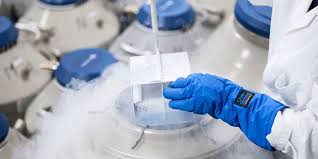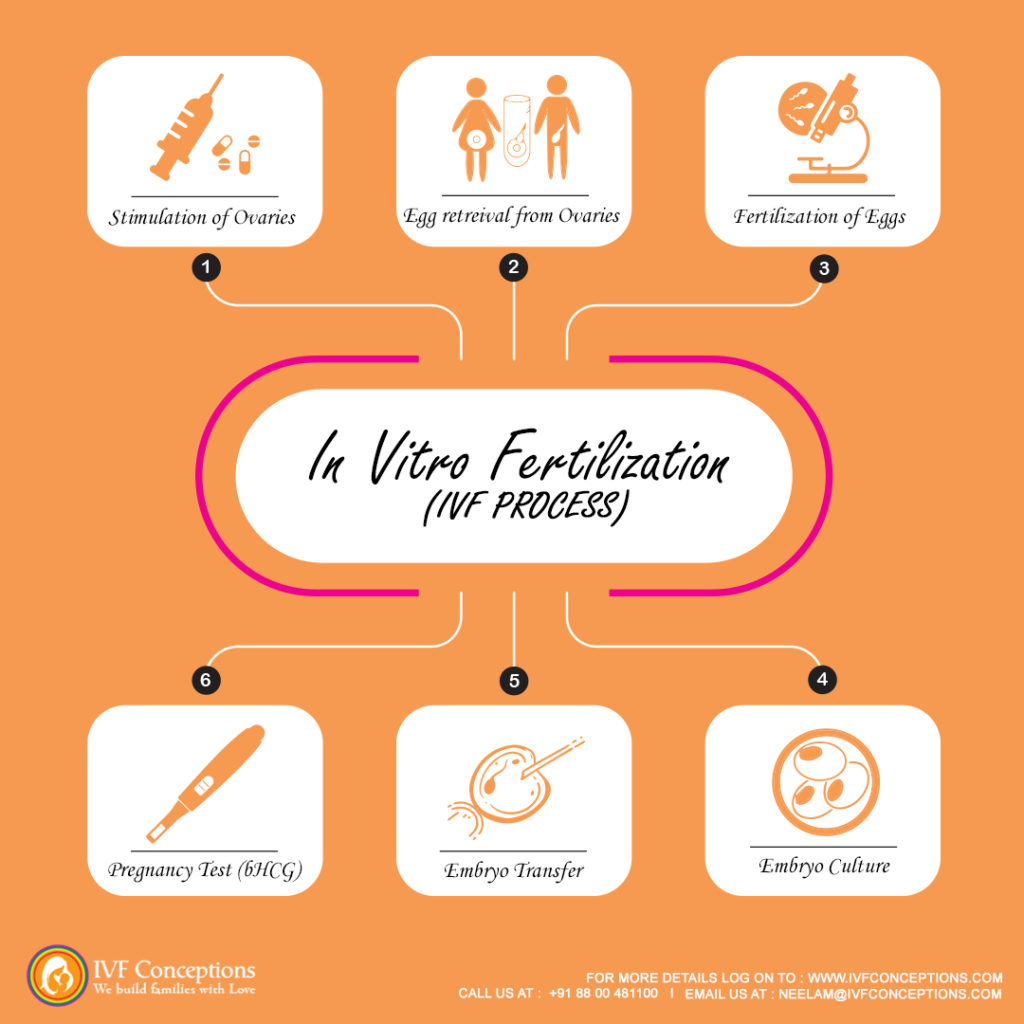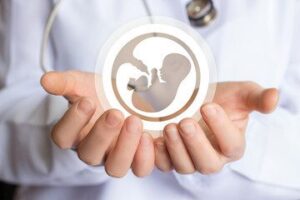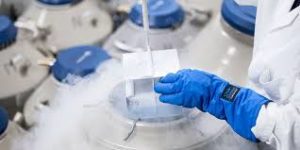Embryo Transfer Day: Guide to the Procedure, Process, and Tips

Embryo transfer is a critical step in the journey toward achieving pregnancy through In Vitro Fertilization (IVF). It’s the day when the carefully cultured embryo(s) are placed in the uterus in hopes of establishing a successful pregnancy. For many intended parents, this day is filled with anticipation, as it represents the culmination of weeks of fertility treatments.
In this guide, we will walk you through the embryo transfer procedure, what you can expect on transfer day, tips for increasing your chances of success, and what to do post-transfer.
In Vitro Fertilization (IVF) is the most commonly used Assisted Reproduction Technique (ART) in the world. In this technique, the sperm and the egg are fertilized outside the body, in the laboratory, to form an embryo.
This embryo is then planted in the woman’s uterus for a successful pregnancy. So, this makes the transfer of the embryo to the woman’s uterus an important part of the procedure, or we can say embryo transfer day is the most anticipated part of the IVF process.
Get in touch for a Free Surrogacy Consultancy:
📲 +91-8800481100 ( WhatsApp, Line, Viber)
What Is an Embryo Transfer?
An embryo transfer is the final step in the IVF process, where embryos created via fertilization in the lab are transferred to the intended mother’s or surrogate’s uterus. The goal is for one or more of these embryos to implant into the uterine lining and lead to a successful pregnancy.
Types of Embryo Transfers
There are two main types of embryo transfers:
- Fresh Embryo Transfer: After fertilization, embryos are grown in the lab for 3 to 5 days before being transferred to the uterus.
- Frozen Embryo Transfer (FET): Embryos are frozen after fertilization and transferred in a future cycle, often when the intended mother’s or surrogate’s body is optimally prepared.
The Embryo Transfer Procedure: Step-by-Step
Understanding the embryo transfer process can help ease any anxiety on the big day. Here’s a step-by-step look at what happens during the procedure:
1. Preparation Before Embryo Transfer
- Pre-transfer Medications: Hormonal medications (such as estrogen and progesterone) are usually administered to prepare the uterine lining for embryo implantation. This step typically starts several days to weeks before transfer day.
- Bladder Filling: You’ll likely be asked to arrive at the clinic with a full bladder, as it helps the doctor get a clearer ultrasound image during the procedure.
- Embryo Selection: Before the transfer, embryologists will review the quality of the embryos to select the best one(s) for transfer. Some clinics will allow you to see an image of the embryos before the transfer.
2. The Embryo Transfer Procedure
- Positioning: You’ll be asked to lie on the examination table with your legs positioned similarly to a Pap smear or pelvic exam.
- Ultrasound Guidance: The doctor will use an ultrasound to guide the transfer process. A transabdominal ultrasound ensures the catheter is placed accurately within the uterus.
- Embryo Placement: Using a thin catheter, the embryo is gently inserted into the uterus. This part of the process is typically painless, and the entire procedure only takes about 10-15 minutes.
- Rest Period: Some clinics may ask you to lie still for a short period (usually 10-20 minutes) after the procedure to allow the embryo to settle.
When does embryo transfer occur?
The embryo transfer is the last procedure of the IVF treatment after which pregnancy occurs. Around the second to sixth day after fertilization, embryo transfers take place, 48-120 hours following sperm fertilization.
In certain cases, it can happen a little later. The IVF’s exact time and day are determined by the embryologist.
Before Embryo Transfer Stage:
How you can prepare for the embryo transfer day?
To optimize the chances of a successful embryo transfer, diligent preparation is key. Here are the essential steps to follow:
- Medication and hormone protocols: Adhering to prescribed medications and hormonal treatments is vital to creating an ideal environment for embryo implantation.
- Synchronization with the menstrual cycle: Precise timing and coordination with the menstrual cycle ensure optimal conditions for embryo transfer.
- Endometrial lining preparation: Thorough preparation of the uterine lining is essential for successful embryo implantation.
- Ultrasound monitoring and follicle growth assessment: Regular monitoring through ultrasound examinations allows the medical team to evaluate follicle growth and determine the ideal time for embryo transfer.
Besides this, you would like to follow the specific instructions given for the day of embryo transfer:
- Do not use cosmetic products on the day of the transfer.
- Drink enough water to keep your bladder 2/3rd full.
- Go for a blood test to know your oestradiol and progesterone level as these hormones will help you the most.
- If you have any anxiety related to speculum insertions, just inform your doctor beforehand.
During the Embryo Transfer Stage:
The Embryo Transfer Procedure:
Embryo transfer is a delicate and precise procedure performed by skilled professionals. Here’s a step-by-step breakdown of what to expect:
- Preparation of the embryos: The embryology team ensures that the selected embryos are properly prepared for transfer.
- Speculum insertion and visualization of the cervix: A speculum is gently inserted into the vagina to expose the cervix, which is then visualized by the medical team.
- Catheter insertion and embryo placement: A thin catheter is carefully guided through the cervix into the uterus, and the embryos are gently placed at the designated location.
- Post-transfer care and recovery instructions: Following the procedure, the medical team provides specific instructions on post-transfer care, including recommended activities, restrictions, and any necessary medications.
 What Happens After Embryo Transfer?
What Happens After Embryo Transfer?
Once the embryo transfer is complete, the waiting period begins. This is often referred to as the “two-week wait” (TWW), the time between the transfer and when a pregnancy test can confirm if the embryo was successfully implanted.
Post-Transfer Symptoms You May Experience
It’s common to experience a few symptoms after embryo transfer, although not everyone will. These include:
- Mild Cramping: Some women feel cramping similar to menstrual cramps, which is normal.
- Spotting: Light spotting or discharge can occur after the transfer, often due to the catheter or hormone fluctuations.
- Bloating and Tenderness: Hormonal medications can lead to bloating and breast tenderness.
Keep in mind that symptoms can vary, and the presence (or absence) of symptoms is not necessarily an indicator of whether or not the procedure was successful.
Success Rates for Embryo Transfer
The success rates for embryo transfers vary depending on several factors, including the age of the intended mother or egg donor, embryo quality, and fertility clinic. Here are some general success rate ranges:
- Fresh Embryo Transfer: Success rates tend to be higher in women under 35, with rates around 45-55% per cycle. As the woman’s age increases, the success rates typically decrease.
- Frozen Embryo Transfer (FET): FET success rates are slightly lower but still substantial, with success rates around 40-50% for women under 35.
Each clinic may have slightly different success rates, so it’s important to consult with your doctor to understand your individual chances based on your specific situation.
Factors That Can Impact Embryo Transfer Success
Several factors can influence the success of an embryo transfer:
- Embryo Quality: The quality and development stage of the embryos play a crucial role. Higher-grade embryos generally have a better chance of implanting.
- Age of the Intended Mother or Donor: Younger eggs tend to result in higher success rates due to better egg quality.
- Uterine Environment: A well-prepared uterine lining is essential for implantation.
- Number of Embryos Transferred: Sometimes multiple embryos are transferred to increase the chances of success, though this also raises the risk of multiples.
- Lifestyle Factors: Factors like smoking, excessive alcohol, and high stress can negatively impact the implantation process.
Tips for a Successful Embryo Transfer
Here are some practical tips to help increase your chances of a successful embryo transfer:
- Follow Your Doctor’s Instructions: Be sure to take all prescribed medications as directed and follow the clinic’s pre- and post-transfer instructions carefully.
- Maintain a Healthy Lifestyle: Leading up to the transfer, aim to maintain a healthy diet, stay hydrated, and avoid smoking, alcohol, and excessive caffeine.
- Stay Relaxed: Try to keep stress levels low. Consider yoga, meditation, or acupuncture to help with relaxation.
- Rest After Transfer: While there’s no need for complete bed rest, avoid intense physical activity for a few days after the transfer.
- Avoid Hot Baths or Saunas: Heat can impact implantation, so avoid hot baths, saunas, or Jacuzzis after the procedure.
- Stay Positive: It’s natural to feel anxious, but staying hopeful and positive can make the waiting period more manageable.
More resources:
10 Tips to Improve IVF Success Rate?
How to deal with the failed IVF cycle?
Difference between IVF and IUI
 Fresh vs Frozen Embryo Transfer: Understanding the Timing for Your Journey
Fresh vs Frozen Embryo Transfer: Understanding the Timing for Your Journey
Whether you opt for a fresh or frozen embryo transfer, each option presents its own unique timeline. Let’s take a friendly look at what you can expect:
Fresh Embryo Transfer (ET)
If you choose a “fresh” transfer, your embryo transfer procedure typically occurs five days after the egg retrieval process.
During this waiting period, the magic of fertilization takes place as the eggs are mixed with sperm.
Throughout this crucial stage, our dedicated embryology team closely monitors the development of your precious embryos, ensuring they have the best chance of thriving.
Frozen Embryo Transfer (FET):
For those who opt for FET, the process involves utilizing embryos frozen from a previous IVF cycle or undergoing preimplantation genetic testing (PGT) to ensure the best chances of success. In this case, your embryos were most likely cryopreserved five, six, or in some instances, seven days after the egg retrieval process. If you are proceeding with a FET, the journey takes a bit longer, typically spanning 3-4 weeks from the start of your menstrual cycle.
However, it’s important to note that the procedure is far from a simple thaw-and-transfer process. It requires careful planning and meticulous effort. Let’s explore how the process:
Once you receive the green light to start a cycle, you will begin taking an oral medication called Estrace for approximately 2-3 weeks.
This crucial step aims to enhance the lining of your uterus, providing the optimal environment for successful embryo implantation. As your cycle progresses, a mid-cycle ultrasound will be scheduled to assess the thickness of your uterine lining, and upon receiving your doctor’s approval, you will move forward with the next steps.
At this stage, you will be instructed to commence intramuscular progesterone injections (commonly known as PIO shots) alongside vaginal progesterone inserts. Though it may not be the most glamorous aspect of the process, it is an essential measure that ensures your body is fully prepared to welcome the embryo and hopefully embark on a healthy pregnancy.
Your FET will take place six days after initiating progesterone supplementation. The timing of this procedure is of utmost importance, playing a critical role in the success of your transfer.
More resources for IVF and fertility:
10 Natural Ways to Boost Male Fertility and Increase Sperm Count
10 Natural Ways To Boost Fertility in Women
All You Need To Know About Infertility Counselling?
What is Better Fresh Eggs or Frozen Eggs?
 Conclusion
Conclusion
Embryo transfer day is an exciting milestone in your IVF journey. While the procedure itself is simple and quick, it’s a critical moment that can lead to the start of pregnancy. By preparing yourself with knowledge, maintaining a healthy lifestyle, and following the guidance of your fertility team, you can maximize your chances of success.
Whether this is your first embryo transfer or a subsequent attempt, staying positive and informed will help you navigate the process with confidence and hope for the best possible outcome.
If you’d like to learn more about IVF, Egg Donation, or surrogacy services globally, check out the rest of our website: IVF Conceptions. We offer legally secure and affordable surrogacy consulting services for FREE.
Get in touch for a Free Surrogacy Consultancy:
📲 +91-8800481100 ( WhatsApp, Line, Viber)

FAQs About Embryo Transfer
How many embryos are transferred?
Generally, transferring one embryo is just enough. But in some cases, doctors may transfer two embryos for a successful pregnancy but in either of the cases, not more than two embryos are transferred to the uterus. When the chances of pregnancy tend to be small for women, doctors may opt to use a technology called HLT, which transfers three or more embryos to the uterus.
Can I have sex after the embryo transfer?
Unfortunately, you cannot have sex for two weeks after the embryo transfer process. Until you receive the reports of the pregnancy test, keep patience, and avoid having sex.
Can an embryo fall out of the uterine cavity?
The uterus is a hollow muscular organ in connection with the vagina. Its contraction prevents the entry of embryos into the vagina following the IVF procedure.
Are there any lifestyle or dietary changes after the embryo transfer?
Drink enough water. Don’t wear tight clothing. It’s great to walk in the fresh air for half an hour a day. Wash in the bathroom only. Hypothermia is to be avoided. Don’t dive into swimming pools or ponds.
Can a doctor postpone the embryo transfer process?
Yes, your doctor can postpone the embryo transfer process owing to the following reasons – Increased abdomen, short breath, or swelling could cause the IVF transfer day to be canceled. Due to disease and viral infections, your immunity may be weak and could not accommodate the embryo. Abnormal level of progesterone – If the levels of progesterone are high then it reduces the chances of effective egg transfer. Also, if it is low, it can affect the outcome.
How full do I need to be for embryo transfer?
When it comes to embryo transfer, having a full bladder plays a crucial role in positioning your uterus for optimal embryo reception.
Your dedicated team will guide you through this process, recommending that you hydrate yourself with 20-30 ounces of fluid starting one hour before your scheduled embryo transfer. This friendly advice aims to create the best possible conditions to support a successful transfer.
Is embryo transfer painful?
Rest assured, the embryo transfer process is designed to be as painless as possible. If you’ve undergone intrauterine insemination (IUI) or a pap smear before, you can expect a similar sensation during the transfer.
Most importantly, there should be no pain involved. Some patients may experience mild discomfort, which can be attributed to having a full bladder or the insertion of a thin catheter through the cervix. However, your dedicated medical team will ensure your comfort throughout the procedure.
What is the best day for embryo transfer?
Nowadays, it has become the standard to consider Day 5, Day 6, or even Day 7 transfers, once the embryo has progressed to the blastocyst stage with a remarkable 200-300+ cells. This friendly approach ensures that your embryos have ample time to flourish, maximizing the potential for a successful outcome.
How many embryos should I transfer?
This decision will depend on several factors, including embryo quality and your age. Most fertility specialists recommend transferring one or two embryos to minimize the risk of multiples.
Does the embryo transfer procedure hurt?
No, the procedure is typically painless, although some women report mild cramping or discomfort.
How soon can I take a pregnancy test after the transfer?
A pregnancy test is usually performed about 10-14 days afterthe embryo transfer.
Can I resume normal activities after the transfer?
While you should avoid strenuous activities, light activities like walking are fine. Your doctor will provide specific guidelines based on your case.
What if the first transfer fails?
If the first embryo transfer is unsuccessful, there may be frozen embryos available for future cycles, or your fertility specialist may suggest other treatment options.
Reference Used:
https://www.illumefertility.com/fertility-blog/embryo-transfer-day-101



 What Happens After Embryo Transfer?
What Happens After Embryo Transfer?
 Fresh vs Frozen Embryo Transfer: Understanding the Timing for Your Journey
Fresh vs Frozen Embryo Transfer: Understanding the Timing for Your Journey Conclusion
Conclusion